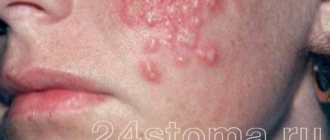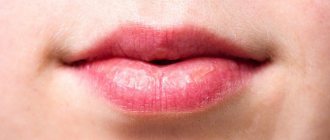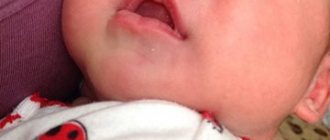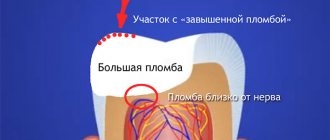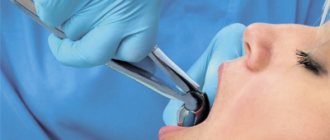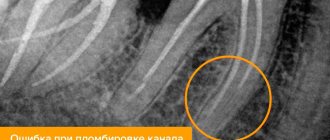Stomatitis in a child is a very common phenomenon caused by an inflammatory process of the oral mucosa, which also occurs in newborns. We can say that raising a child and not knowing what stomatitis looks like in children is almost impossible. Quite often, the symptoms of the disease initially resemble those of a respiratory infection with a characteristic fever, stuffy nose and poor appetite. But after a short time, parents notice the appearance of blisters and ulcers on the gums, cheeks and inner lips, which can be caused by various pathogens. The child behaves anxiously, capriciously, sleeps poorly... Even for an adult, it is very difficult to endure the painful sensations that arise from stomatitis, not to mention children, who cannot always clearly explain what is tormenting them. Parents, of course, are concerned about the question of what causes stomatitis in children and whether the occurrence of such a disease can be prevented. Let's try to understand this thoroughly.
Types of stomatitis
Everyone is more accustomed to saying “stomatitis”, but it would be more correct to say “stomatitis”, since this is a generalizing concept for a whole group of diseases. Depending on the causes of stomatitis, it can be divided into several types, each of which has a number of characteristics.
Viral or herpetic stomatitis in children
One of the most common types of stomatitis in children is caused by the herpes simplex virus. Typically, a child becomes infected through airborne droplets. In addition, the virus is transmitted through dishes, toys, and household items. Most often, herpetic stomatitis appears in a child between the ages of one and four years. The disease begins with a cold, accompanied by lethargy and increased body temperature. Sometimes there is a runny nose and cough. Around the second day, small round or oval erosions of a light yellow color with a bright red border appear on the lips, tongue and inside of the cheeks. Swelling appears, the gums begin to bleed, and the child refuses to eat.
Traumatic stomatitis in a child
The disease is caused by mechanical trauma to the oral cavity. For example, burns from hot food, a too hard nipple, the habit of chewing a pencil. In addition, traumatic stomatitis often occurs in children with malocclusion due to frequent biting of the cheeks and tongue.
Candidal stomatitis
Appears in children under one year of age. The cause is Candida fungi. The main symptom is the appearance of a white coating in the baby’s mouth. It should be noted that this should not be confused with regular flowering after feeding. A cause for concern is if plaque persists and the baby refuses to eat.
Drug or allergic stomatitis in children
Caused by certain allergies or reactions to medications. If this type of disease is suspected, it is necessary to identify and remove the allergen, otherwise there is a risk of unpleasant consequences, including anaphylactic shock.
Each type of stomatitis is characterized by a certain childhood age. Young children often have candidiasis or fungus (thrush). At the age of “I want to know everything” in a child of 3-4 years, stomatitis is usually infectious in nature, when the infection is transmitted through dirty hands or objects. From one to four years, an acute herpetic form of the disease is often observed.
General information
Streptoderma is a disease caused by streptococci.
Damage to the skin is characterized by the appearance of a rash. Blisters and ulcers form on the surface of the skin, which itch and cause discomfort. Streptoderma in children can be acute or chronic. The first is characterized by an aggressive course with severe symptoms. Chronic is characterized by periodic exacerbations and periods of subsidence of the inflammatory process.
Based on the depth of the lesion, streptoderma is divided into superficial, deep and intertriginous (the rash develops in the skin folds). Each of the forms has its own characteristics.
Causes of stomatitis in children
In childhood stomatitis, the mucous membrane of the oral cavity is affected: small, white or yellowish, fluid-filled pimples appear on its surface. In some cases, ulcers form.
Stomatitis is predominantly a childhood disease, although it can also occur in adults. The rash affects the inside of the cheeks, tongue and gums. The disease causes a lot of inconvenience: pimples hurt and itch, and their appearance is accompanied by a burning sensation in the mouth.
Among the main reasons for the development of stomatitis are:
- poor oral hygiene;
- mucosal injuries;
- diseases of the gastrointestinal tract;
- burns of the oral cavity;
- pathogenic bacteria that enter the oral cavity with dirty hands, toys, etc.
Why does it happen?
Many pediatric studies have proven that the skin and mucous membranes of newborns are thinner than those of adults, so babies often encounter rashes of different locations, including in the lower or upper lip. In a child, yellow or white small pimples may be the result of disorders of certain internal organs and systems. If acne appears inside the mouth or outside the lip, this may indicate the influence of such factors:
- dermatitis of various types and severity;
- use of low-quality or unsuitable epidermal care products;
- a constant urge to put fingers or other dirty objects in your mouth;
- diseases of viral or bacterial origin;
- cold;
- hormonal changes;
- insufficient hygiene procedures or their absence;
- anatomical features of the body, as a result of which the sebaceous glands are displaced;
- narrowing of the ducts and blockage of the glandular channels;
- mechanical damage in the lip area.
Symptoms of stomatitis
Signs of stomatitis in a child have a number of features characteristic of a particular type of disease.
Herpetic stomatitis in children is considered very common and usually manifests itself as follows:
- in the initial stage, the disease is confused with a cold due to increased body temperature, often runny nose and cough;
- the inflammatory process begins abruptly, manifested by headaches and pain in the mouth and muscles due to intoxication of the body;
- submandibular lymph nodes are enlarged and painful;
- feature - the formation of small bubbles filled with liquid.
Upon visual examination, redness of the gum tissue around the teeth, swelling of the mucous membrane and numerous vesicular rashes covered with a yellowish or whitish coating are noted. Candidal stomatitis in children can be clinically acute or mild. In this case, signs of stomatitis in a child appear as follows:
- very rarely an increase in temperature is recorded;
- in the oral cavity there are affected areas covered with a coating of cottage cheese;
- children behave restlessly, are capricious, refuse to eat;
- Locally similar stomatitis in children (or thrush, as it is often called) occurs on the tongue, cheeks, gums and inner lips).
Aphthous stomatitis in children is the most common form of the disease, but also difficult to treat due to the difficulty of identifying the specific pathogen. Similar stomatitis in children, the symptoms of which are more common in schoolchildren than in the younger age group, is characterized by the following symptoms:
- rash of single ulcers (feed) on the mucous membrane (on the cheeks, in the area of the tongue and the inside of the lips);
- Initially, such stomatitis in children in the mouth is manifested by characteristic redness, itching, burning, and an increase in temperature is also noted.
In this case, the ulcers do not look like blisters, but are whitish ulcers with a bright red outline around them. Then the ulcers are usually covered with a cloudy film, which can break through and cause a secondary infection, after which the baby’s condition will only worsen. Parents should know that stomatitis in a child is not a single type of infection with specific symptoms.
Each form of this inflammatory process has its own specific symptoms and causes. That is why, despite a number of individual similar points (temperature during stomatitis in a child, signs of inflammation of the mucous membrane, enlarged lymph nodes), the problem of treating stomatitis in a child is solved differently, taking into account the form of the disease.
Varieties
White pimples
Numerous painless white pimples on the lips indicate blockage of the sebaceous glands.
Such a pimple on the lip or in the corners of the baby’s mouth most often indicates a blockage of the sebaceous gland, as a result of which a subcutaneous vesicle filled with fat is formed. The rash can be multiple or one large pimple forms in the corner of the mouth, which takes a long time to go away. These tumors rarely cause pain or other unpleasant symptoms.
Transparent rashes
If a child develops a rash of this type in the lip area, this most likely indicates a mechanical lesion of the mucous membrane. A bubble is often fixed on the damaged area, which occurs as a result of regular exposure of the surface of the wound to the external environment. Water pimple in a child may also indicate a thermal burn that occurs when eating hot food or high-temperature drinks. These rashes are usually painful, especially if exposed to them frequently.
Features of ulcers
This type of acne is less dangerous and is associated with the penetration of bacteria and other pathogenic microorganisms into the pores and sebaceous glands. The pimple is small in size and is accompanied by an inflammatory reaction, and it becomes obvious when it matures and grows to a large size. In a child, a similar problem is associated with insufficient hygiene or keeping foreign objects in the mouth.
Diagnosis of the disease
The pathology of stomatitis is diagnosed by infectious disease specialists, pediatricians, and pediatric dentists. The diagnosis is made on the basis of clinical and epidemiological data.
Based on materials from smears, scrapings, and blood, the following studies are carried out:
- virological;
- bacteriological;
- immunological;
- cytological.
Diagnostics such as polymerase chain reaction and enzyme immunoassay are performed. In some cases, the child has a blood test for the presence of sugar, and a consultation with an endocrinologist, allergist and other specialists is carried out.
Correctly conducted diagnostic examinations will help establish the correct diagnosis and prescribe effective treatment so that the situation does not worsen.
Causes of streptoderma
The causative agent of the disease is group A streptococcus. The bacterium affects the surface of the skin. But not every encounter with a microorganism leads to the development of a disease. Infection occurs if there are aggravating factors:
- cuts, abrasions, cracks and other damage to the skin into which pathogens easily penetrate;
- failure to comply with hygiene rules;
- weak immunity;
- endocrine pathologies;
- concomitant dermatological diseases;
- stress;
- avitaminosis;
- washing the skin too often, as a result of which the protective film is washed off;
- intense exposure to low or high temperatures;
- intoxication;
- blood flow disturbance.
If at least one of the listed causes of streptoderma in children is present, the likelihood of developing pathology increases significantly.
Treatment of stomatitis in children
After a medical diagnosis of stomatitis in children under one year of age, a specialist prescribes highly effective drugs to combat the existing type of disease. Experts recommend that parents, at the first suspicion of stomatitis in a child, increase the amount the child drinks to irrigate the oral mucosa and remove toxins from the body. Clean drinking water without gas, fruit drinks or compotes that are not too sweet or sour; herbal teas are perfect for this. During this period, it is worth refusing to drink the child from concentrated juices and drinks with gas in order to avoid irritation of the mucous membrane.
After this, the specialist begins medical manipulations to cure stomatitis in the child.
Anesthesia
The first step is to numb the mucous membranes so that the child can eat and drink properly and generally reduce the child's stress level. Choline preparations with salicylate or lidocaine are commonly used as pain relievers in children. For this purpose, medications to facilitate teething, for example Kamistad or Dentinox gel, are suitable. Gel products are preferable for children because they are almost instantly absorbed into the mucosal tissue. Prepare with lidocaine in the form of a spray should not be used in children under one year of age - this may lead to bronchospasm.
Direct treatment of stomatitis
After anesthesia, you can begin treating your baby’s stomatitis. Firstly, all rashes and wounds must be treated with a special preparation, depending on the type of disease. Antiviral drugs are used for herpetic stomatitis, antibiotics and antiseptic drugs for bacterial stomatitis, antifungal drugs for candidal stomatitis. Not only the affected area, but also adjacent areas must be treated - this will stop the spread of the pathogenic process.
An important condition for eliminating infection is thorough and timely oral hygiene. The surface of the child's tongue and teeth should be brushed twice a day; experts recommend rinsing the mouth after every meal or drink. For young children, hygiene procedures are carried out using a piece of gauze or a silicone fingertip.
Treatment of allergic stomatitis
If a specialist has identified the presence of allergic stomatitis or severe swelling of the oral cavity is observed, then the drugs Fenistil, Suprastin, Diphenhydramine are used.
Treatment of viral stomatitis
For herpetic stomatitis, antiviral agents should be used in the form of ointments containing acyclovir - Gerpevir, Virolex, Acik, Viferon, oxolinic ointment.
For relapses of viral stomatitis, experts recommend a general strengthening of the immune system with the help of Immunal, Interferon, Viferon in suppositories. The duration of treatment and dosage of the drug is determined by the doctor. Often, medical experts recommend using the drug Cholisal in gel form. Perfectly relieves swelling, inflammation, pain, fever, eliminates pathogenic microflora. The drug does not contain sugar, has no taste and has a light anise aroma. To treat stomatitis in a child under one year old, it is necessary to rub a strip of gelatin preparation no more than 0.5 centimeters long into the palate, gums and inner surface of the cheeks, teeth, 2-3 times a day after brushing the teeth.
Treatment of candidal stomatitis
For candidal stomatitis, the doctor uses antifungal drugs in the form of an ointment, for example, Clotrimazole, Candida, Candizol, and often prescribes soda rinses.
This helps create an alkaline environment in the oral cavity, harmful to pathogenic fungal microflora. Procedures with soda are especially effective in the treatment of candidal stomatitis in children under the age of one year, because at this age most drugs are contraindicated. To treat the oral cavity, you need to dilute a teaspoon of soda in a glass of warm boiled water, then wrap a piece of gauze around a clean finger and wipe the palate, inner surface of the cheeks, gums and sublingual space of the child, periodically dipping your finger into the solution. The procedure should be done after every child eats or drinks. Older children can rinse their mouths with baking soda themselves.
Treatment of aphthous stomatitis
With aphthous stomatitis, the first priority is to unload the affected area and speed up the healing of the poop. An aqueous solution of blue (methylene blue) has long been used for this purpose. It is not recommended to use a blue alcohol solution for this, since the ethyl alcohol in its composition will cause poisoning or burn the baby’s mucous membrane.
Wounds are treated with a blue cotton swab 3-6 times a day.
Treatment of traumatic stomatitis
According to experts, traumatic stomatitis most often occurs in children 1-2 years old. This type of disease is accompanied by bacterial microflora, so the use of medicinal and antiseptic agents will be required. For children under 2 years of age, use Cholisal, Solcoseryl, Actovegin gel, and also wipe the oral cavity with a solution of chlorhexidine or soda.
Treatment of bacterial stomatitis
For the treatment of bacterial stomatitis, drugs such as Tantum Verde, Orasept and Hexoral in the form of a spray, Doctor Theiss and Septolete in the form of lozenges and many others are effective. Experts do not recommend using lozenges to treat children under 6 years of age due to the risk of asphyxia, and sprays are suitable for treating bacterial stomatitis in children over one year of age. Antiseptic rinses and gel preparations with metronidazole are also effective.
Among solutions with an antiseptic effect, the drug Miramistin is especially recommended, as it promotes the regeneration of the affected mucous membrane and eliminates most pathogens. The aerosol can is convenient for treating children under one year of age. To do this, you need to make 3 injections and rinse your mouth with them for several minutes 3-4 times a day. Babies under the age of one year are treated with gauze soaked in the drug.
Methods of disposal
What medications are available?
You can stop the inflammatory process at home using lotions made from the essence of potassium permanganate.
White pimples in the lip area need to be treated only after consulting a pediatrician and determining the nature of their occurrence. At home, you can prepare baths using a solution of potassium permanganate, through which it is possible to stop the inflammatory process. At the same time, during treatment it is worth observing the rules of hygiene and carefully monitoring the child so that he does not drag dirty objects into his mouth. White pimples can be treated with the medications presented in the table:
| Medication group | Name |
| Antihistamines against allergic reactions | "Kestin" |
| "Claritin" | |
| "Zyrtec" | |
| "Fenistil" | |
| "Tsetrin" | |
| "Ketotifen" | |
| Medicines against herpes | "Acyclovir" |
| "Gerpevir" | |
| "Zovirax" | |
| Immunostimulants | "Isoprinosine" |
| "Groprinosin" | |
| Nonsteroidal anti-inflammatory drugs | "Ibuprofen" |
| "Nurofen" | |
| "Diclofenac" | |
| Medicines against helminths | "Vermox" |
| "Vermakar" | |
| "Nemozol" |
Are cosmetic procedures allowed?
In the case of an advanced form of the disease, a specialist may prescribe cryotherapy to remove rashes.
It is not recommended for children to eliminate white pimples on the lips in this way, but older children can do so as prescribed by a dermatologist. The basis for treating rashes is proper care of the skin, not only of the area near the mouth, but also of the entire face. It is possible to get rid of the problem in childhood with the help of masks made from natural products. Teenagers are recommended to use lotions, tonics, foams, micellar water and milk to wash their skin. If the acne is large and neglected, then the specialist may decide to remove the child’s rashes using laser or cryotherapy.
In no case should you carry out cosmetic procedures at your own discretion, since many such manipulations against white pimples are prohibited in childhood, and others can provoke irreversible complications and worsen the condition of the mucous membrane.
Caring for a child with stomatitis
Parental involvement in treatment and proper care of children is not only important, but also necessary. With stomatitis, it is necessary to strictly follow the treatment plan, which is often very labor-intensive, so the result depends on parental care and control. The oral cavity is a kind of epicenter of pain, so it is not surprising that the child is very temperamental. Therefore, it is important for parents to be patient and persistent.
Most mothers and fathers are concerned about what to feed their child with stomatitis. Firstly, you need to eat only soft, warm and pasty foods, such as purees. The main thing is that the food is high in calories and not heavy, because the child’s immunity is already weakened. After eating, be sure to rinse your mouth so as not to provoke the development of stomatitis and not to add an additional infection. Spicy, sour, sweet and citrus foods should be excluded from the child's diet.
For stomatitis in children, it is necessary to relieve pain. This is done with the help of various medications to avoid food refusal and poor sleep. Also, for stomatitis in children, adequate oral treatment is very important. Your doctor should recommend how to handle your child and rinse his mouth.
Treatment methods for molluscum contagiosum
Molluscum contagiosum should be treated by a doctor. You should not try to remove papules yourself - this can lead to bacterial infection.
Treatment of molluscum contagiosum depends on a number of factors, primarily on the stage of development of the disease, the severity of symptoms and the state of the patient’s immunity. The following methods can be used:
Instrumental removal
Papules can be removed instrumentally, followed by treating the wound with antibacterial agents.
Credestruction
Cryodestruction is the removal of papules using exposure to low temperatures. Papules are treated with liquid nitrogen. Tissues treated in this way freeze and die.
Radio wave removal
Molluscum contagiosum papules can be removed using the radio wave method (using the Surgitron apparatus) and using a laser.
Electrocoagulation
Electrocoagulation is the effect of high-frequency current on papules. It is popularly described as “cauterization with electricity.” At the moment of discharge, a local strong thermal effect occurs, the tissues coagulate, which virtually eliminates the risk of infection at the treatment site.
Conservative treatment
The course of treatment for molluscum contagiosum may include conservative treatment with ointments and creams, as well as taking antiviral drugs (if the affected area is large).
Make an appointment Do not self-medicate. Contact our specialists who will correctly diagnose and prescribe treatment.
Rate how useful the material was
thank you for rating
Prevention of stomatitis in children
Irritative stomatitis can be prevented with good oral hygiene, regular dental check-ups and proper nutrition. Because many adults and children carry the herpes virus and can transmit it even without symptoms, there is no practical way to prevent herpetic stomatitis. However, parents may discourage their child from kissing, eating, or playing in close contact with people who have an active herpes infection.
Ulcers can be minimized by teaching children to avoid injury, even minor trauma to the mouth. If our doctor determines that a child has a nutritional deficiency, parents can make sure the child is taking appropriate supplements and eating recommended foods. It won’t hurt to visit the dentist once every six months if we have previously discovered stomatitis in the child. Regular visits to our clinic will help prevent serious complications and detect the disease in time.
Bathing
- You can bathe a newborn girl as soon as the umbilical wound dries. Up to six months, baths should be daily, then you can bathe the baby every other day, and when she reaches a year, even less often, replacing bath procedures with showers.
- You should carefully wash all the folds and spaces between your fingers and toes.
- It is recommended to use soap (not toilet soap, but a special one for children, with a minimum amount of additives!) or baby foam no more than 1-2 times a week, and do not add it to water, but apply it to the skin and wash it off with a shower. Soapy water dries out the vaginal mucosa. There is an opinion that until the moment the child begins to crawl on the floor (i.e., until the moment when he can really get dirty) or until the moment when the baby begins to eat complementary foods (i.e., smearing porridge on his face with his hands or puree) - there is no point in washing it with soap, because the child does not get dirty with anything and is constantly either in the arms of his parents or in a clean crib. And once again disturbing his skin with soap products is not only pointless, but also harmful - the protective layer of the skin is washed off. But, firstly, daily bathing in clean water is still necessary, and secondly, this does not exclude washing the child with soap after he pooped.
- Adding various herbal infusions to the bath is at your discretion. However, it must be borne in mind that almost all of them dry out the already dry skin of babies. At the end of winter and spring in cities, an increased amount of chlorine is added to the central water supply, which greatly dries out the skin of children during daily bathing. In this case, it is recommended to add special softeners to the bathing water, for example, calendula bathing agent (Weleda has this). And after bathing, lubricate the baby’s skin with baby oil.
- A newborn girl should use her own, purely individual, bathing set: towel, washcloth and mitten. By the way, you can wash the baby with a piece of gauze instead of a washcloth, since it can be washed and boiled.
- After bathing, the newborn girl is blotted dry with a clean towel or warm sheet, and the skin folds, if necessary, are treated with baby hygienic oil.
How to make an appointment with a doctor
The pediatric department of JSC "Medicine" (clinic of academician Roitberg) in Moscow offers European-level services for the diagnosis, treatment and prevention of boils in children. To receive highly qualified medical care, you must make an appointment with a pediatrician who will conduct an examination and comprehensive medical examination of the child. If necessary, the pediatrician will consult with or refer other specialists.
To make an appointment with a specialist in the pediatric department of JSC "Medicine" (clinic of academician Roitberg), use one of the following methods:
- quick registration form on the website;
- by telephone 24/7;
- using a mobile application.
Our clinic is located in the center of Moscow at the address: 2nd Tverskoy-Yamskaya lane, 10, a five-minute walk from the Mayakovskaya metro station, as well as not far from the Belorusskaya, Tverskaya, Chekhovskaya and Novoslobodskaya metro stations.

